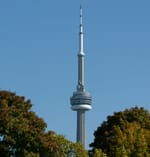Noah Hanifin signed a contract on Thursday for six years and just under $5 million AAV. I like looking at Matt Cane’s prediction model for these things to see how close reality came. It very often is close, and rarely is very far out.
He had Hanifin at just under $4.5 million on a six year deal, so this was nearly on the money.
Cap Friendly does a good job of tracking the unsigned RFAs, so we can see who else, other than you-know-who, haven’t signed yet. Normally, anyone still without a contract gets that wrapped up in the two weeks of September before training camp. Negotiations that drag on into camp time are rare.
If by some unlikely chance, an RFA is signed after the season starts, their cap hit for this season is prorated to reflect the number of days they are under contract.
Of the 12 remaining RFAs, three are non-NHL regulars:
Matt Puempel, who is 25, played in no NHL games last year, and had arbitration rights, but didn’t elect to use them. Maybe he should have. He’s played on several bad teams lately, and ended up on the Red Wings. They have no cap space, not enough players, and likely need cheap depth. Eventually they’ll sign him.
Marek Langhamer and Eric Comrie are the two goalies on the list, and they have four NHL games between them last season. Both seem to have been bumped down to AHL-only status and their contracts will reflect that.
Three of the RFAs to be signed did not play a full season last year for very different reasons:
Michael McCarron saw only 18 games with Montréal, and the question about this young player is if he can make the lineup on a regular basis or not. In those 18 games, he had one assist playing very low minutes. At 23, it sure looks like make or break time. Is it Montréal or Laval for him? With no NHL track record to go on, Cane’s model has him receiving a one-year deal at virtually the same amount he got last year: $725,000. I won’t be surprised if he ends up with even less.
Shea Theodore is a totally different type of prospect. He played less than a full season for the Vegas Golden Knights largely because he was one of their few waiver-exempt players. In 61 games played, this 23-year-old defender had six goals and 23 assists. He is going to be a regular roster player on VGK, but his contract is a tough one to figure out.
He’s not quite as unproven as Andreas Johnsson, but he’s nearly in that territory. He’ll want no term, so the next deal will be based on better results, and the team will want to lock him up for a low AAV now. Cane’s model predicts a two-year deal at just over $2 million, and that seems possible. The end result may be a one-year deal, however, and if so, the amount will be lower, fans will be outraged, and Theodore will have set himself up to cash in next summer.
Jordan Schmaltz is another player who seems like he should be breaking into the NHL, but at one assist in 13 games, his stat line looks like McCarron’s, even though he is a defender and has more excuse for it. Cane’s model has him at a near-minimum contract one-year deal, and that seems reasonable, and it is a little odd this isn’t done already.
The other six RFAs are all regular NHLers who have real track records to base deals on:
Darnell Nurse played more minutes than anyone on this list and he had 26 points in 82 games for the Oilers. Cane’s model has him at four years and just under $5 million. I think we can assume he’ll get something very much like Hanifin’s deal of at least six years, with a little extra AAV as the traditional Oilers overpay. With the injury to Andrej Sekera, the Oilers have their backs to the wall on negotiations with defenders. They need to get this done.
Joshua Morrisey is another defenceman, the same age as Nurse, he also shoots left, and their points and ice time were nearly identical last season. Winnipeg is not desperate, however. Cane’s model has Morrisey at somewhere in the $2.7 million to $4.1 million, depending on term. The Jets have $26 million tied up in six defenders, so it’s hard to see where Morrisey fits money-wise on this team, even if they actually are short of left-shooting defenders. They have some expiring UFAs, however, so Morrisey might just need to wait and suddenly the ice time will open up in front of him. If I were him, I wouldn’t take term, but you never know what players want more: security or a chance to earn the biggest money.
Sam Reinhart had a funny season. He wasn’t bad on a Sabres team that was terrible, but he didn’t improve over his previous results either. At 22, you’re supposed to get better. Maybe he did, and it was just swamped in the surrounding gloom of a terrible season. Either way, it’s a tough time to ask for a raise. Cane’s model has him at $4 - $5.5 million, depending on term, and I’m not sure what I’d be looking for as the player here. Maybe he is what he is, in which case, he should look for term while there’s still hope for improvement. Maybe he just needs one season on a team that isn’t dreadful. If any of these negotiations drag into camp time, I think it will be this one.
Nick Ritchie is not, as it happens, better than William Nylander. He’s a good utility player with third-liner minutes and good results. Cane’s model has him very low, at $1.6 million for two years, and that’s not even Connor Brown money. He doesn’t score enough for Brown money, so fair enough. he should take term now, for as much as he can get.
Miles Wood had a very unexpectedly good year in New Jersey. he played less than Ritchie, scored more, and looks like Brown did in his rookie season. Wood tuned up the Leafs in one game so bad, I still remember the feeling of doom when he hit the ice. But was that a fluky season full of goals and few assists, or do they have a diamond in the rough here? Cane’s model has him at just under $2 million for two years, and that seems fair. He might be looking to lock up some term for more money, however.
And that leaves us with this guy:
He’s going to get term. He’s going to get an AAV that starts with a six or a seven, and it’s going to happen before camp.



